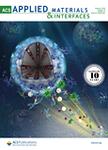版权所有:内蒙古大学图书馆 技术提供:维普资讯• 智图
内蒙古自治区呼和浩特市赛罕区大学西街235号 邮编: 010021

作者机构:Zhejiang Univ State Key Lab Fluid Power & Mechatron Syst Hangzhou 310027 Zhejiang Peoples R China Univ Northumbria Fac Engn & Environm Newcastle Upon Tyne NEI 8ST Tyne & Wear England
出 版 物:《ACS APPLIED MATERIALS & INTERFACES》 (美国化学会应用材料与界面)
年 卷 期:2021年第13卷第39期
页 面:47043-47051页
核心收录:
学科分类:0817[工学-化学工程与技术] 08[工学] 0805[工学-材料科学与工程(可授工学、理学学位)]
基 金:National Natural Science Foundation of China [NSFC 51875521] Zhejiang Provincial Natural Science Foundation of China [LZ19E050002] Science Fund for Creative Research Groups of National Natural Science Foundation of China International Exchange Grant through Royal Society UK [IEC/NSFC/201078] International Exchange Grant through NSFC [IEC/NSFC/201078]
主 题:VOCs sensor selectivity virtual sensor array QCM MXene breath analysis
摘 要:Recently virtual sensor arrays (VSAs) have been developed to improve the selectivity of volatile organic compound (VOC) sensors. However, most reported VSAs rely on detecting single property change of the sensing material after their exposure to VOCs, thus resulting in a loss of much valuable information. In this work, we propose a VSA with the high dimensionality of outputs based on a quartz crystal microbalance (QCM) and a sensing layer of MXene. Changes in both mechanical and electrical properties of the MXene film are utilized in the detection of the VOCs. We take the changes of parameters of the Butterworth-van Dyke model for the QCM-based sensor operated at multiple harmonics as the responses of the VSA to various VOCs. The dimensionality of the VSA s responses has been expanded to four independent outputs, and the responses to the VOCs have shown good linearity in multidimensional space. The response and recovery times are 16 and 54 s, respectively. Based on machine learning algorithms, the proposed VSA accurately identifies different VOCs and mixtures, as well as quantifies the targeted VOC in complex backgrounds (with an accuracy of 90.6%). Moreover, we demonstrate the capacity of the VSA to identify patients with diabetic ketosis from volunteers with an accuracy of 95%, based on the detection of their exhaled breath. The QCM-based VSA shows great potential for detecting VOC biomarkers in human breath for disease diagnosis.